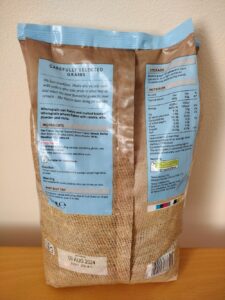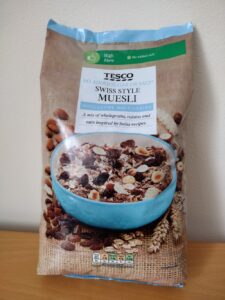
Chelmwell
Discover empowerment, harmony, and transformation through wellness

Do you struggle to understand food labels? Being able to read and understand these labels is crucial for making informed dietary choices that can positively impact your health and overall wellness. Food labels are packed with important information that helps consumers know exactly what they are buying and consuming.
In the United Kingdom, food labelling regulations specify the essential details that must be included on food labels. There are also strict rules about what claims can and cannot be made on food labels. Any nutrition and health claims suggesting that a food can prevent, treat, or cure a disease or medical condition is prohibited.
By understanding these details, you can avoid deceptive advertising and strategies, ensuring that the food you buy meets your dietary needs and preferences. Let’s examine the various sections of a food label and interpret how each one affects you.
The Basics of a Food Label
Food labels contain important sections: the Nutrition panel, the ingredients list, and nutrient or health claims. While back-of-pack nutrition labelling is mandatory, front-of-pack labelling is voluntary.
Mandatory Nutrients: The mandatory nutrients that must be displayed on the back-of-pack nutrition panel include:
Voluntary Nutrients: Voluntary nutrients that can be displayed include:
Ingredients List: The ingredients are listed in descending order by weight, with the highest ingredient listed first. Allergens in the ingredients list are highlighted in bold font.
Nutritional Information: The nutritional information shows the values for energy, fat, carbohydrate, fibre, protein, and salt per 100g.
Traffic Light Labelling System: Used by food manufacturers on packaging to help consumers quickly understand the levels of key nutrients in a product:
High consumption of fat, saturated fat, sugar, and salt can result in chronic health conditions.
Nutrition Claims: A claim that suggests that a food has beneficial nutritional properties:
Health Claims: A health claim is any claim that suggests that health benefits can result from consuming a given food. For example, a label might state, “Proven to lower cholesterol.”
Best Before Date: Indicates that the product remains safe to eat after this date but may not be at its best quality.
Use by Date: Indicates that the product may cause harm if consumed after this date.
Practical Example: Tesco Swiss Style Muesli Label
Let’s look at a practical example to better understand how to read food labels.


Here’s the Tesco Swiss Style Muesli label breakdown:
The label shows that this product is high in fibre and low in salt, but it contains moderate amounts of natural sugars and fat. High consumption of foods high in sugar and fat can lead to an increased risk of obesity, Type 2 diabetes, and heart disease.
Conclusion
In conclusion, understanding the information on food labels can empower you to take control of your nutrition and make decisions that support your overall health and wellbeing, as well as that of your family.